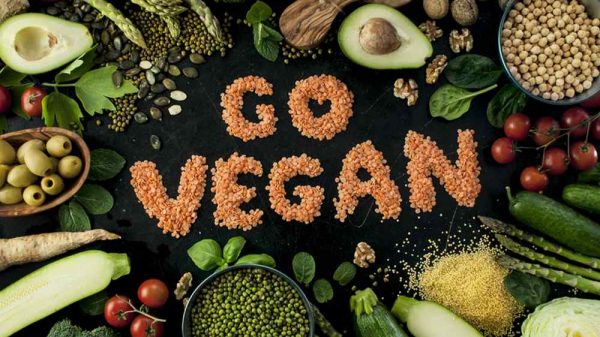The western diet is a pattern of eating that has emerged in industrialized countries and is associated with numerous disease states. But what exactly is the western diet, and why is it linked to so many diseases? Here we break down the components of the western diet, why it is detrimental to health, and how to adapt your diet to promote optimal health.
The western diet is a cause of so many health problems and chronic illnesses, and nutrition is becoming a significant public health concern. But what is the western diet anyway, and what should you eat instead? Keep reading to find out.
What Is the Western Diet?
The western diet describes dietary patterns that have evolved in recent history. The western diet is pretty much synonymous with the American diet since both include all of the same components.
The western diet includes high amounts of these foods:
- Saturated fat: Saturated fat is found in abundance in red meat and full-fat dairy products like butter, milk, and cheese. Because the western diet is so high in meat and dairy, individuals eating a typical western diet also consume large amounts of saturated fat.
- Trans fat: Trans fat is another unhealthy fat that is found in foods that have been subjected to an industrial process that has molecularly altered the fat. Trans fat is commonly found in fried foods, restaurant foods, and packaged foods like chips and frozen pizza.
- Added sugars: Added sugars are sugars that have been removed from their original source and added into other food products to improve taste and increase sweetness. Added sugars like high-fructose corn syrup are hidden in numerous food products, from cookies, crackers, and bread, to soda and candy.
- Refined grains: Refined grains are grains that have been subjected to an industrial process that has removed the hull of the grain, which has the highest nutritional value. The western diet is characterized by a high intake of refined grains like white bread and white pasta.
- Processed foods: Processed foods are very common in western societies. Processed foods have been subjected to industrial processes that have removed crucial nutrients and added harmful nutrients. Examples of processed foods include sausages, crackers, breakfast cereal, granola bars, and prepackaged foods. Processed foods are also packed with sodium, which adds taste and acts as a preservative.
What Does the Typical Western Diet Look Like?
Let’s go through an average day of someone who eats a Western diet.
For breakfast, this individual might have scrambled eggs, pancakes, and bacon. Though tasty, this breakfast is filled with sugar and saturated fat.
Lunch might include a sandwich prepared on white bread and filled with mayonnaise, processed ham slices, and cheese slices. A common lunch side is fried potato chips, and the entire meal is washed down with a sugary soft drink. This entire meal offers far too much-saturated fat and added sugar, without any micronutrients and fiber.
Dinner might include a high-calorie fast food meal, such as fried chicken and French fries. Dessert is common as part of the western diet, with many people enjoying foods like ice cream and cookies after dinner.
Typical snacks on the western diet may include crackers, candy, and chips.
Why Are These Ingredients So Bad?
Saturated fat, added sugars, refined grains, and processed foods are so bad because they are associated with a very high incidence of disease. (1)
Metabolic Dysfunction
Metabolic dysfunction is one of the key disturbances caused by the western diet. The foods consumed on the western diet have a direct negative impact on mitochondria, which are organelles within cells that are responsible for converting food into energy to power the body.
Eating high-fat, high-sugar foods places stress on the cells throughout the body. As a result, all cells produce an excess of waste products called reactive oxygen species or free radicals. These reactive compounds interact with healthy cells to inflict damage. The constant state of oxidative damage contributes to the constant, low-grade activation of the immune system – a condition called inflammation.
This constant state of oxidative stress and low-grade inflammation leads to disruptions in metabolic function, leading to an increased risk of the following conditions:
- Insulin resistance: Insulin is a hormone released by the pancreas in response to an increase in blood sugar levels. Insulin is responsible for signaling to cells to uptake sugar from the bloodstream to use for energy. Specialized insulin receptors are present on the surface of all cells to detect the release of insulin. However, this entire mechanism is disrupted by the chronic high consumption of added sugars and saturated fat. Added sugars cause blood sugar levels to remain chronically high, which disrupts normal insulin function and can even exhaust the insulin supply in the pancreas.
- Type 2 diabetes: Type 2 diabetes develops after prolonged insulin resistance and dysfunction. Individuals with type 2 diabetes need to constantly monitor their blood sugar levels and supplement with insulin to ensure that their blood sugar remains stable.
- Obesity: Obesity is an epidemic in the United States and other countries where the western diet is the predominant eating pattern. Obesity describes the state of having a body mass index that is well above the healthy upper parameters. Being overweight or obese is a significant risk factor for developing insulin resistance, type 2 diabetes, fatty liver disease, and cardiovascular disease.
- Fatty liver disease: Fatty liver disease describes the accumulation of fat within liver tissue. When eating a large amount of saturated fat and added sugar over time, excess sugar is stored in the form of fat in the liver. Over time, if diet remains unchanged, fatty liver disease can progress to cause inflammatory liver conditions like steatohepatitis and cirrhosis, which jeopardize healthy liver function.
Cardiovascular Disease
A western diet dramatically increases the risk of developing heart disease. Saturated fat, added sugar, and sodium all contribute to the development of heart disease.
Saturated fat is responsible for increasing the levels of cholesterol in the blood. With the chronic consumption of saturated fat, levels of low-density lipoprotein (LDL cholesterol) reach unhealthy levels. LDL cholesterol in the blood and other particles congeal on the sides of blood vessels to form plaques. Without any therapeutic diet changes, these plaques can grow, reaching a size that impedes blood flow. These plaques can also dislodge from the sides of the blood vessels and travel until they get stuck and cut off blood flow. These plaques can cause heart attack and stroke.
Cardiovascular disease also develops as a result of high blood pressure or hypertension. Dietary factors are a major cause of high blood pressure in the American population. The high consumption of sodium in the western diet is a major cause of high blood pressure. Sodium is found in abundance in all packaged and fast food products, from crackers and chips to meat and cheese. Eating too much sodium causes the body to retain water, which drives up blood volume. Higher blood volume exerts a higher pressure on arterial walls, resulting in higher blood pressure.
Many people don’t realize that sugar is also a major culprit in high blood pressure. Chronically high levels of blood sugar can cause inflammation in blood vessels and nearly all organ systems.
The combination of sodium and salt causes scarring in the walls of blood vessels. As a result, blood vessels become rigid and are unable to dilate and contract normally, contributing to chronically high blood pressure. Scarred blood vessels also put strain on the heart and increase the risk of developing cardiovascular disease.
Autoimmune Diseases
Autoimmune diseases are characterized as dysfunction of the immune system. Normally, the immune system is programmed to attack foreign invaders like viruses and bacteria as well as damaged cells. However, in the case of autoimmune diseases, the immune system starts to attack the body’s own healthy tissue.
Immune dysfunction that drives autoimmune diseases result directly from systemic inflammation that is largely caused by the inflammatory foods in the western diet. Examples of autoimmune diseases include lupus, multiple sclerosis, rheumatoid arthritis, psoriasis, and inflammatory bowel disease.
Disruption of the Gut Microbiome
The western diet is pitifully low in fiber, and the gastrointestinal tract requires fiber in order to function optimally. Without fiber, the good bacteria in the gut microbiome are not able to flourish. Plus, a diet high in saturated fat, meat, and dairy support the growth of harmful bacteria. These bad bacteria produce harmful compounds in the breakdown of inflammatory foods, which then enter the bloodstream and contribute to systemic inflammation. The western diet completely throws off the balance of the gut microbiome. A low-fiber diet also contributes to hardened stools and constipation. Overall, these factors combine to increase the prevalence of gastrointestinal disorders like diverticulitis, ulcerative colitis, and inflammatory bowel disease.
Cancers
In addition to metabolic syndrome, gut disorders, cardiovascular diseases, and autoimmune diseases, the western diet also increases cancer risk. For example, a study published in Gastroenterology analyzed 137,217 individuals and found that the risk of colorectal cancer was higher among those following a western diet. (2)
To understand how the western diet influences the development of cancer, let’s first answer the question: What exactly is cancer? Cancer occurs when cells don’t grow as they should. Normally, most cells replicate perfectly, and when there are mistakes, corrective processes to make sure that these cells are healed or destroyed. As we get older, our cellular processes slow down. The body is unable to catch mistakes effectively, and when the aging process is coupled with a poor diet, uncorrected mistakes in cell division are even more common. These damaged cells can be harmful to the body, at which point they are referred to as cancer.
Other Downfalls of the Western Diet
Besides providing sufficient calories, there are basically no redeeming qualities of the western diet. Here are more pitfalls associated with the western diet.
Nutrient-Poor Food
The western diet is often described as high-calorie fast food. But even though the western diet is characterized by an abundance of calories, most people are still deficient in many nutrients, particularly micronutrients like fiber, vitamins, minerals, and antioxidants.
Why is the western diet so low in micronutrients? Because it has a shortage of whole, plant-based foods like vegetables, fruits, nuts, and seeds. Micronutrients are responsible for helping the body operate smoothly, mitigating oxidative stress, and lowering inflammation.
Tends to Be Accompanied by a Sedentary Lifestyle
The western diet tends to also be associated with a western lifestyle, which is largely sedentary and indoors. Much of the population doesn’t get as much physical activity as they should, due to office jobs, low-activity jobs, and the advent of technology that has us getting our entertainment from the television or computer rather than the outdoors.
As a result, we’re not as active as we should be, meaning that we are burning far fewer calories than we should be. This leads to the tendency to gain excess weight, which is connected to systemic inflammation and metabolic disorders.
Low activity levels also increase the risk of developing cardiovascular disease. The heart is a muscle and must be used in order to remain strong. However, when the heart is not challenged with regular exercise, the heart muscle remains weaker. As a result, the heart must work harder to pump blood throughout the body, resulting in a higher resting heart rate. Combined with a poor diet, low activity levels increase the risk of cardiovascular disease and high blood pressure.
Poor Protein Quality
Though a lot of meat is present in fast food, protein is not high-quality. Most of the meat consumed on a western diet is processed and entangled with lots of saturated fat. This can make it difficult to digest because the body must separate the fat from the protein. High-quality protein is important because it affords optimal ratios of essential amino acids, which are vital for synthesizing muscle tissue, neurotransmitters, hormones, and enzymes.
Eating Too Much Food
Consuming too many calories is a serious pitfall associated with the western diet. When we consume too many calories, the extra energy that we don’t burn is simply stored throughout the body as fat. Over time, fat storage can lead to detrimental weight gain that jeopardizes your health.
This common overindulgence associated with the western diet happens for very scientific reasons. First of all, the foods that we eat on the western diet are very dense in calories, meaning that a very small quantity of food contains tons of calories. So, while the body’s energy needs may be satisfied, the stomach is not. The stomach then continues to send hunger signals to the brain, even though energy intake may be sufficient. For example, a small milkshake and small order of french fries may easily exceed 700 calories, even though this may just be a snack!
Secondly, the fat and sugar found in abundance on the western diet are addicting. We are programmed to crave energy-dense food for survival purposes. However, in a time where food is readily available, it is easy to overindulge
The Original Human Diet and How It Evolved
The western diet is so harmful to human health because it’s not how we have biologically evolved to eat. What did the human diet use to look like? During Paleolithic times, humans operated primarily as hunter-gatherers and their diet consisted of meat, fish, and a large number of plant foods like nuts, seeds, fruits, and vegetables. Paleolithic humans likely consumed less meat than we do today, simply because they only had access to meat when they successfully hunted. A large bulk of the Paleolithic diet would’ve been based on a large number of plant foods.
With the advent of agricultural strategies about 10,000 years ago, humans were able to grow ample amounts of grain. As a result, the human diet began to rely on staples such as corn or wheat, depending on the kind of crops that local geography supported. In the past couple of centuries, further industrial development has led to even more rapid and mass production of food items. Foods became increasingly processed, with added and altered ingredients.
In many ways, the agricultural and industrial revolutions had a significant positive impact on human life. Being able to grow and produce mass quantities of food meant that starvation became less common. Readily available food sources allowed for more free time, yielding a higher quality of life and more time for discoveries and development in science, arts, and medicine.
However, because humans did not evolve to consume mass quantities of saturated fat and sugar, human genes are not adapted to efficiently process these forms of energy.
Adapting Your Diet
Though the western diet increases the risk of developing many different diseases, the good news is that the human body is highly responsive to environmental changes, including diet changes. Even if you have developed metabolic diseases, this does not necessarily mean that you have to resign yourself to the western diet-induced fate. Making diet changes today and sustaining them for months and years can both reverse certain disease states and reduce your risk of developing more.
So what can you do to enhance the quality of your diet? Following the Mediterranean diet as a guide can be very helpful. You can start following the Mediterranean diet by Replacing saturated fat, added sugars, refined grains, and processed foods in your diet with the following foods.
1. Healthy Fats
Not all fats are unhealthy. In fact, fat is a biologically necessary part of a healthy diet. The key is choosing the right fats. Instead of saturated fat, get lots of polyunsaturated and monounsaturated fats in your diet. Polyunsaturated and monounsaturated fats are critical sources of energy, while also providing the raw materials to fortify the membrane of every cell throughout the body.
One type of polyunsaturated fats called omega-3 fatty acids are particularly protective of human health. Omega-3 fatty acids fight against systemic inflammation across all organ systems.
Where can you get healthy fats in your diet? You can find omega-3 fatty acids in fatty fish, in the form of eicosapentaenoic acid (EPA) and docosahexaenoic acid (DHA). To get more EPA and DHA in your diet, chow down on fish like salmon, sardines, anchovies, and mackerel. Plant sources of omega-3 fatty acids can be found in the form of alpha-linolenic acid (ALA). To get more ALA in your diet, enjoy flaxseeds, chia seeds, and walnuts on a regular basis.
For other forms of healthy fat, add other foods like olive oil, avocado, pumpkin seeds, almonds, and pecans to your diet.
2. Choose Healthier Meat and Dairy Products
Though meat and dairy should not make up the bulk of your diet, they can serve as a healthy source of protein if you choose the right sources.
First, it’s important to always choose low-fat meat and dairy. Choosing low-fat meat and dairy products will significantly lower your consumption of saturated fat. Second, it’s important to stick to organic meat and dairy that has been as unprocessed as possible. Fresh, low-fat dairy products and meat will ensure that you’re getting a balance of essential amino acids without the negatives of consuming high levels of saturated fat, sugar, and sodium.
3. Eat Lots of Fruits and Vegetables
Fruits and vegetables are hugely beneficial for anyone’s diet. Fresh produce is loaded with micronutrients like vitamins, minerals, polyphenols, and carotenoids that fight against inflammation and oxidative stress. A good rule of thumb is to include fruits and vegetables as a significant component of every meal and snack. For example, for breakfast top your morning oatmeal with blueberries, raspberries, and bananas. For lunch, prepare a salad that includes chopped kale, romaine lettuce, and tomatoes. For dinner, make sure you include healthy sides like sauteed asparagus and wilted spinach. And finally, for a snack, enjoy apples with peanut butter and carrots with a low-fat dip. Your diet really should include this many fruits and veggies!
4. Eat Plenty of Whole Grains
Whole grain is an important source of fiber in a healthy diet. Whole grains differ from refined grains because they have been minimally processed and still retain all parts of the natural grain. For example, brown rice still contains the outer hull, which is packed with fiber, protein, vitamins, minerals, and other micronutrients. Excellent examples of whole grains include quinoa, millet, whole-grain pasta, oats, and buckwheat.
5. Add Lots of Nuts, Seeds, and Beans
Nuts, seeds, and beans are important sources of plant-based protein. Though no single source of nuts, seeds, beans, or whole grains offers balanced ratios of amino acids, they can provide optimal ratios of essential amino acids when combined throughout the course of the day.
Reminder: Steer Clear of Packaged and Prepared Foods
Packaged and prepared foods are tasty and addicting, but they are packed with everything that is bad for us: saturated fat, added sugar, refined grains, and sodium. To limit your consumption of these kinds of foods, refrain from buying them. A lot of times, not having these foods in the house will be enough of a barrier to prevent you from consuming them. When you’re shopping at the grocery store, stay away from the inner aisles that are packed with crackers, chips, cured meats, cookies, cakes, and frozen food.
Tips for Making These Healthy Food Taste Good
The bad thing about the western diet is that it’s totally addicting. The palate, mind, and brain are all connected, which reinforces the choice to eat lots of foods heavy in sugar and saturated fat. Here are a few quick tips to ease the transition off the western diet.
- Swap full-fat for nonfat. Choosing nonfat options is particularly important regarding meat and dairy. For example, instead of choosing full-fat yogurt, choose nonfat yogurt. To preserve the creamy texture, opt for Greek yogurt instead of regular yogurt. Though opting for nonfat options may slightly alter the texture and taste, you will slowly adjust.
- Substitute good fats for bad fats. If you’re missing that creamy texture characteristic of full-fat foods, you can instead incorporate healthy fats into your meals instead. For example, if you enjoy creamy milkshakes, try blending nonfat almond milk, half an avocado, and ripened, frozen bananas in a shake, along with your favorite fruits. This combination will offer a satisfyingly creamy texture without unhealthy fats.
- Use natural sweeteners. Excess added sugars and artificial sweeteners can jeopardize your health if consumed in large quantities over a long period of time. Instead of using these sweeteners, choose naturally sweet foods such as fruit. For example, sweetening your baked goods with dates and topping your oatmeal with sweet fruit such as mango.
- Swap out soda for sparkling drinks. Soda is packed with sugar that spikes your blood sugar. Instead, opt for sparkling water. If you enjoy a little sweetness, try mixing the sparkling water with a little fresh squeezed orange.
- Don’t deny yourself the occasional treat. When you are aiming to eat healthier foods and lead a healthier lifestyle, this doesn’t necessarily mean cutting out all junk food altogether. Instead, allow yourself to have an occasional indulgence, such as a cookie or a cheeseburger. Depriving yourself of periodic treats may lead to binge eating unhealthy foods.
Should You Stop Eating a Western Diet?
Because the western diet is associated with so many health issues, it’s a good idea to start eating healthier foods as soon as possible. Eating foods that fit into a Mediterranean diet can help prevent conditions like metabolic syndrome and heart disease. If you have biomarkers of a noncommunicable disease, eating healthy foods will help reverse the condition or prevent it from worsening. Talk with your doctor or a specialist in dietetics to tailor your diet to your specific needs.
The Western Diet: Conclusion
The western diet encompasses eating habits that are associated with a number of chronic diseases like fatty liver disease, type 2 diabetes, cardiovascular diseases, and even cancer. Though foods in the western diet are tasty, they are packed with ingredients like saturated fat, added sugars, and other additives that elicit an inflammatory response in the body. To support your health, make adaptation so that your diet is based primarily on whole foods and filled with antioxidants from fruits and veggies, essential amino acids from high-quality protein, and fiber from whole grains and beans.
References























